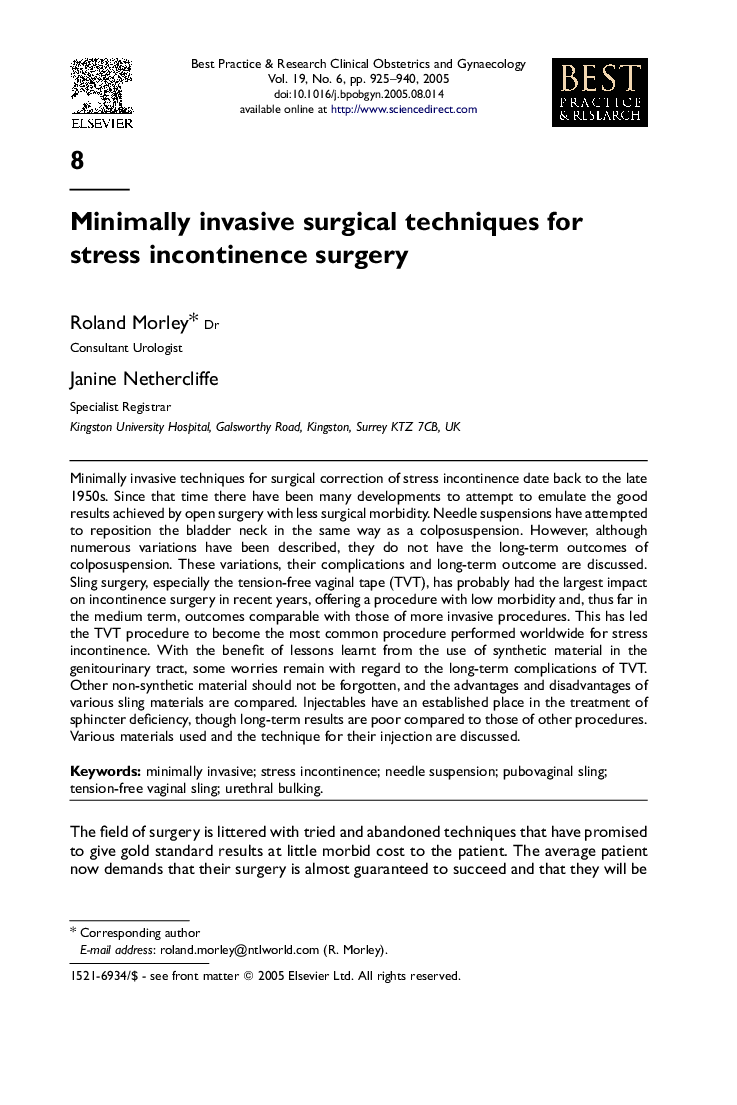| Article ID | Journal | Published Year | Pages | File Type |
|---|---|---|---|---|
| 9315840 | Best Practice & Research Clinical Obstetrics & Gynaecology | 2005 | 16 Pages |
Abstract
Minimally invasive techniques for surgical correction of stress incontinence date back to the late 1950s. Since that time there have been many developments to attempt to emulate the good results achieved by open surgery with less surgical morbidity. Needle suspensions have attempted to reposition the bladder neck in the same way as a colposuspension. However, although numerous variations have been described, they do not have the long-term outcomes of colposuspension. These variations, their complications and long-term outcome are discussed. Sling surgery, especially the tension-free vaginal tape (TVT), has probably had the largest impact on incontinence surgery in recent years, offering a procedure with low morbidity and, thus far in the medium term, outcomes comparable with those of more invasive procedures. This has led the TVT procedure to become the most common procedure performed worldwide for stress incontinence. With the benefit of lessons learnt from the use of synthetic material in the genitourinary tract, some worries remain with regard to the long-term complications of TVT. Other non-synthetic material should not be forgotten, and the advantages and disadvantages of various sling materials are compared. Injectables have an established place in the treatment of sphincter deficiency, though long-term results are poor compared to those of other procedures. Various materials used and the technique for their injection are discussed.
Related Topics
Health Sciences
Medicine and Dentistry
Obstetrics, Gynecology and Women's Health
Authors
Roland (Consultant Urologist), Janine (Specialist Registrar),
